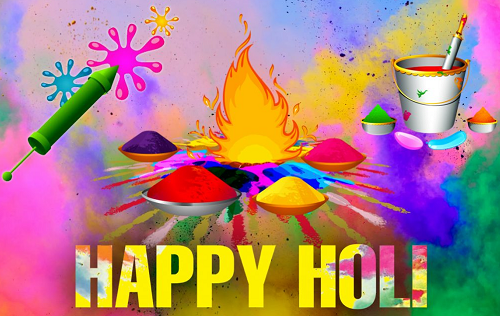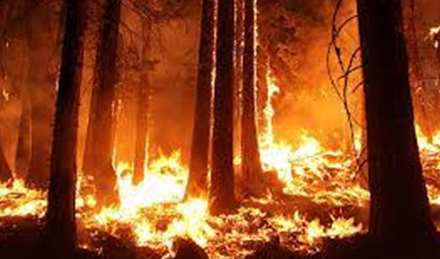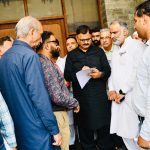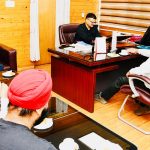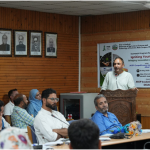The quote by Shel Silverstein—‘And all the colours I am inside have not been invented yet’ fits very snugly the Indian armed forces when it comes to celebrate the most vibrant of festivals of India i.e. Holi. It seems the American writer had by default already anticipated the true vibrancy of this festival and inadvertently coined his quote not knowing its apt usage when it came to apply to our country’s armed forces. Army of any country is the kaleidoscopic reflection of its society in its various hues. Drawn from every nook and corner of the country, the armed forces are the true glue which binds together its people, culture, art, and traditions in the real sense.Indian armed forces are no exception to this unwritten rule.
The occupational hazards of serving the armed forces are just incomparable to other services ,where leaving his home and hearth a soldier is for months together cut off from the crackling joy and laughter of his family and near and dear ones. Festivals are one such occasion when even these occupational hazards are sometimes softened by the arrival of the former in the rough and tumble of a soldier’s life. Of all the festivals which India celebrates, Holiretains its pride of place for kicking in the much awaited spontaneity, gaiety and foot tapping music by all and sundry. “Doe Nair’ the celebrated army writer in the book “I married the army“has very succinctly built up the narrative leading up to rapturous celebrations in many places of army’s cantonments as seen through her eyes over the years.
Nonetheless Holi consisting of many colour combinations is primarily resting on four base colours i.e. Red, yellow, blue and green. Each colour signifying an altogether different connotation in life. Red signifies or symbolises love and festivities, yellow is the colour of turmeric, a powder native to India and used as a natural remedy, blue represents the Hindu God Lord Krishna and green is for new beginnings. What a thoughtful combination of colours telescoping the philosophy of ideal Indian life in short. An army man’s perspective of celebrating any festival is way different from his civilian count part. Knowing fully well that he is living life on the edge, with no takes later on, he wants to make out the most of what life throws at him festivals including. But then Holi the festival of vibrancy, spontaneity and gaiety is the dearest of all to him. Since there runs a thread of commonality between this festival and his own life, both denoting a never ending fight of good over the evil as also the gay abandon with which a soldier throws caution to the winds when taking on the dangers of his occupation.
By serving in the armed forces, a soldier is a typical personification of good over evil caring little for his own wellbeing and comfort, something which “Bhakt Prahlad” son of demon king Hirnayakashyap too symbolized when he took on the might and ire of his own father throwing caution to the winds rooted in his firm convictions of righteousness of his actions and correcting the wayward behavior of the demon king towards his subjects. From smearing each other with colours to enjoying plateful of delectable Gujiyas and copious amounts of “Bhang” the most preferred potion of Lord Shiva the bonhomie and camaraderie which Holi pumps in, ushers in a carnival type of mood among people of all ages. As brought earlier, memoirs about life in the armed forces will be incomplete without a chapter on how we celebrate all festivals with true vigour and enthusiasm not knowing when we will get the next moment to let our hair down. May be constant idea of meeting death in the line of duty makes us grab every excuse to celebrate the fact we are alive and kicking .No one can stay away from fun on this great day of Holi inside an army cantonment. The preparations start a few days earlier in the army area irrespective of the business of the schedule in the cantt.
In fact festivals like Holietc usher in a new kind of dynamism in the rank and file of Jawans, Jcos and officers who want to leave no stone unturned to put their imprint of a boisterous Holi on the terra firma of the cantonment. The preparations include giving special orders in the unit run community kitchens/langarsto go for delicious finger licking foods and delicacies like Gujiyas, Malpuas and Dahi Bhallas with young recruits /soldiers collecting firewood and buying of colours, Gullal and balloons centrally at the unit level. On the day of reckoning the early birds flap their wings and start landing at the officer’s mess, JCO’s mess etc.
Singing naughty songs both in local language which is the lingua franca of the army unit, pichkaris rule the roost over here with a fair share of Bhang in the thandais of all and sundry. All through the day they keep repeating ‘Buranamano Holi Hai” with the young officers just prefixing Madam or Sir as the case may be while barging into their abodes. You can land at anybody’s place on Holi without an invite and at whatever time suits you. You are sure to be treated well with no holds barred. As for the officer’s mess after everyone gathers there, a second round of merriment would start with ladies being drowned into small pools of full of flowers, mud and colours. But the final stroke of Holi would be when the women will take out their vent of action,hidden angst on young bachelors and spinsters with showers of Beer, water and whisky altogether in one go. The pranks, drinks and the sensual dances would not for a second make you out of place.
Most of the armed forces personnel have had an ample exposure of celebrating Holi before coming to this disciplined force and find these celebrations on a different wavelength in civil street in recent times. We find particularly the young men and women on entirely different wavelengths in so far as these celebrations are concerned. The young women in particular abhor this festival with majority of them trying to escape to unknown places to avoid getting caught in the rigmarole of hooliganism. They feel that it was actually one more day when young men and boys would get the license to use the alibi of their culture to openly molest and tease the opposite sex with acts of ogling, sexual innuendoes, abuses etc. How funny it is that in a country’s urban spread, women are dead afraid to fall prey to the evil machinations of their male counterparts. Ironically in the same country women vent out their pent up emotions, angst and buried anxieties against their men folk in “Lathmaar Holi” publically in places like Virndavan, Mathura and neighbouring Barsana by beating them black and blue with no considerations whatsoever.
Actually Holi is another form of Indian festival marking the rise of good over evil through its bonfire, onset of harvesting season, start of summers and closing of the winter chapter for the farmers.It held more significance for women as it also marked a celebration of love amongst Lord Krishna and his women followers, the Gopikas and in them the arch follower was a married woman named Radha. In Virndavan, Mathura and neighbouring Barsana as brought earlier Holi is still seen as that one day when women are allowed to live for pleasure. In fact on the Basant Poornima day the festival starts with the eldest male member of the family putting on the vibrant colours on all the members of the family. Similarly even the women in the family are free to act as they wish till the Holi celebrations are not over.
But nothing to beat this act of sublimation of socially unacceptable behaviour amongst our Indian troops which was most visible to me during the Holi celebrations of March 1996,when I was deployed at the highest battle field of the world ,the Siachen glacier. Not sure that one would see the daylight of tomorrow, our troops full of bravado still maintained poise, dignity and a semblance of order while celebrating the festival of colours at the base camp of Siachen . Nothing could be more poignant for me to see the troops send in advance packets of Gulal and frozen mithais either through the half link patrols atop the snow scooters or being Para dropped by hepters close to the area of deployment on the AGPL/Actual ground position line to enable the troops guarding the Soltoro ridge line, celebrate the festival of colours in true spirit.
Since the maximum troops drawn for my unit were either from Tibet or Nepal a naturally inborn affinity for this festival arose in them alongside we Indians. Particularly in Nepal Holi along with other Hindu festivals, is celebrated as a national festival. It is an important and major pan Nepal famous event along with Dashain and Tihar(Dewali). Holi is celebrated in the Nepali month of Falgun and signifies the legends of the Hindu God Krishna. Similarly in the month of march 2002, while deployed at Munabao, Rajasthan during operation Parakram it was a virtual feast for my eyes and soul to watch our troops do dance and merry making lifted spiritually on little amounts of Bhang brought surreptitiously from Barmer a day or two earlier.
The way they danced on the drum beats of the regimental bands echoed deep into the sand dunes of Munabao desert to be heard loud and clear by our adversaries livid with anger and jealousy. In fact all these above interpretations allow us to derive a better understanding of each other’s behavior and also allow us to engage in self –reflection, to better understand our own attitude in today’s context. So when in ancient times the otherwise male-dominated ,men attempted sublimation (a defence mechanism) to put women on a higher pedestal and let them be worshipped as goddess at other times they also let them explore their carnal pleasures through festivals like Holi.
But in this urban rootless life of modern Indians, people forget the true spirit with which these festivals were created. Ironically Holi which marked complete pleasure for everyone, has become another instance where in the garb of tradition, young perverts turn to hooliganism. They turn to molesting young girls caught unaware on streets while looking out for pure fun on this day which actually represents nothing else but happiness.Festivals like films or movies are the barometers of a society at large whether evolving in the right direction or not. Since mass participation of people is the basis for these celebrations or rather the accepted ‘Sine qua non” the behaviours so displayed during these festivities go a long way indetermining to tweak these celebrations according to the accepted norms of behaviour. In any case a subtle change can be seen in the present dispensation wherein PM Modi is seen with the troops celebrating such festivals with gay abandon to personalize the quote of Shel silverstein—‘And all the colours I am inside have not been invented yet’—symbolizing the colours of valour, resolve and nationalism.
(The writer is a retired army officer and a regular scribe. Email: [email protected])


